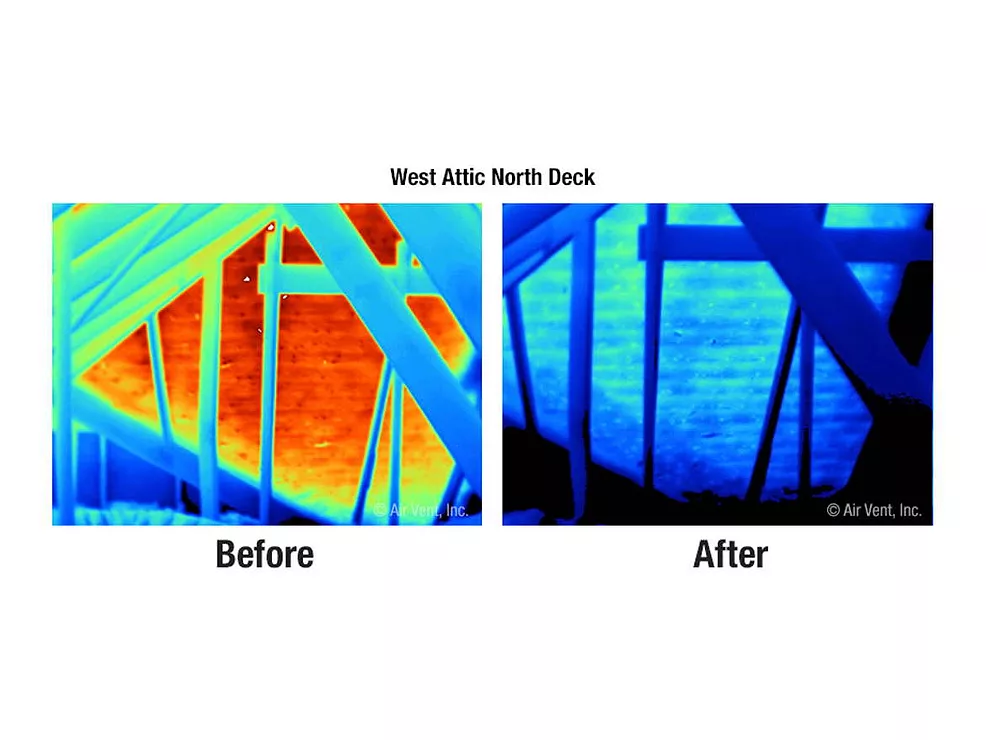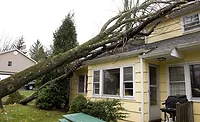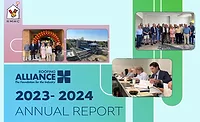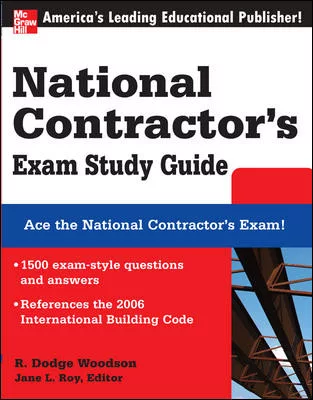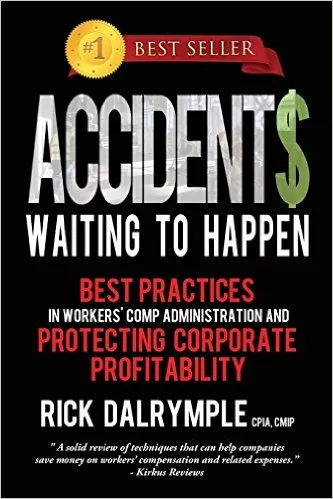Roofing Resiliency
FORTIFIED Roofing Pays: New Study Shows Huge Drop in Claims
Report from the Alabama Department of Insurance shows just how effective a FORTIFIED roof was during Hurricane Sally
.webp?t=1747929846)
FORTIFIED Roof homes that weathered Hurricane Sally saw a 73% reduction in claim frequency, a 15% reduction in claim severity and a 72% reduction in loss ratios compared to conventionally built roofs.
— Images courtesy of AccuWeather
A new collaborative study by the Alabama Department of Insurance and the University of Alabama’s Center for Risk and Insurance Research confirms that homes built to the Insurance Institute for Business & Home Safety’s (IBHS) FORTIFIED standards suffered dramatically less damage during Hurricane Sally.
The report, released on Monday, found that FORTIFIED Roof homes experienced a 73% reduction in claim frequency, a 15% reduction in claim severity and a 72% reduction in loss ratios compared with conventionally built homes. FORTIFIED Gold homes fared even better, with reductions of 76%, 24% and 67%, respectively.
RELATED | How Selling a FORTIFIED Roof Can Boost Profits
Hurricane Sally made landfall at Gulf Shores, Ala, as a strong Category 2 storm in September 2020. The study’s authors collected data from 86 carriers, covering more than 40,000 single-family policies south of Interstate 10 and identified 7,417 FORTIFIED homes in the sample.
FORTIFIED’s Construction Features
The study explained that under the FORTIFIED standard, certified roofs require sealed roof decks, ring-shank nails or hurricane ties, reinforced perimeter edges and wind-resistant attic vents.
FORTIFIED Silver adds impact-rated openings, enhanced soffit attachments, gable-end bracing and anchored chimneys. FORTIFIED Gold further mandates continuous load paths, pressure-rated openings and impact-resistant wall sheathing.
RELATED | GAF, IBHS Establish Alliance to Expand FORTIFIED Program
“[Fortified] is a voluntary, beyond-code construction program designed to help people protect their homes from severe weather,” the IBHS study noted
Government Data on Adoption
Federal tracking shows just 35 percent of hazard-prone jurisdictions have adopted current hazard-resistant building codes, leaving a significant gap in resilience nationwide
IBHS’s “Rating the States” report, now in its fifth edition, scores the 18 Atlantic and Gulf Coast states on code adoption and enforcement, with average state scores hovering around 65 out of 100
Alabama leads with more than 53,000 certified FORTIFIED homes — the highest in the nation, according to reporting by The Washington Post.
Several states offer financial incentives to offset FORTIFIED upgrade costs. In 2021, Louisiana enacted grants offering up to $10,000 per homeowner for meeting FORTIFIED standards, replacing prior mitigation credits
Florida’s My Safe Florida Home program allocates $200 million to offer up to $10,000 in matching grants for wind-mitigation retrofits, including roof upgrades
Under North Carolina’s Beach Plan, Outer Banks homeowners qualify for grants of up to $10,000 toward FORTIFIED roofs, reducing insurer payouts after storms. The North Carolina Insurance Underwriting Association also offers a free FORTIFIED Roof endorsement when a covered claim results in roof replacement.
In Texas, a bill advanced this spring in the State House would establish a state-funded retrofit program for stronger roofs, modeled after Alabama’s initiative, and offer premium discounts for FORTIFIED compliance.
Similar proposals are under consideration in Oklahoma, Kentucky and California, reflecting growing bipartisan consensus on resilience incentives.
Insurance Discounts, Market Impacts and Tariffs
Insurance carriers continue to expand discounts for FORTIFIED homes. IBHS lists policies in multiple states offering 10–55 percent off the wind portion of premiums for FORTIFIED Roof installations. One sample of 86 insurers noted average policyholder savings between 20% and 30%.
The study concluded that in Alabama, replacing all conventional roofs with FORTIFIED upgrades would have slashed policyholders’ out-of-pocket costs by $32.6 million (61%) and insurers’ paid losses by $99.9 million (67%) from Sally’s after-effects.
The study also addresses the impact of FORTIFIED cost increases due to recent U.S. tariffs: 25 percent on steel and aluminum and 20 percent on certain Chinese imports. The levies threaten to drive up costs for metal panels, fasteners, flashing and synthetic underlayment integral to FORTIFIED roofs.
Contractors have reported up to 15% price hikes on critical connectors since early 2025. Broader inflation in lumber, concrete and insulation has added further upward pressure, complicating retrofit budgets.
Nevertheless, the study’s 66–71% reduction in overall damage costs suggests a strong return on investment even after accounting for tariff-driven price increases.
Alabama Insurance Commissioner Mark Fowler called the study “clear empirical data” validating two decades of resilience efforts and urged other states to adopt FORTIFIED programs.
“The enhanced fastening requirements of the FORTIFIED standard proved critical in preventing roof deck uplift,” the report concludes, making a compelling case for contractors, insurers and policymakers to champion resilient construction.
The findings strengthen the business case for promoting FORTIFIED certification for roofing professionals.
Homeowners in hurricane-prone regions now have quantified proof that resilient design boosts safety, property value and long-term savings — underscoring a market shift toward beyond-code performance in high-risk areas.
Looking for a reprint of this article?
From high-res PDFs to custom plaques, order your copy today!




